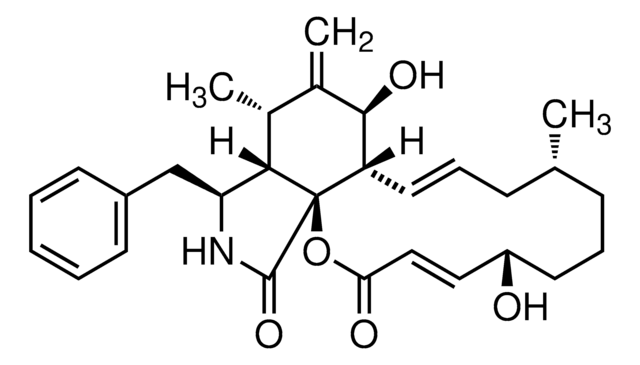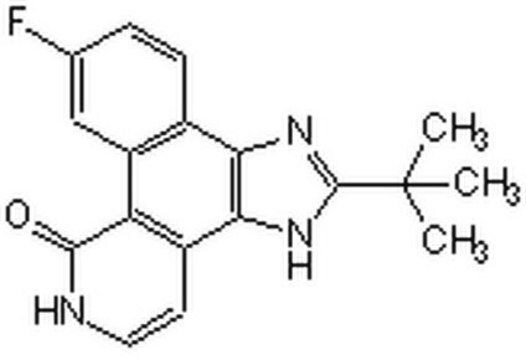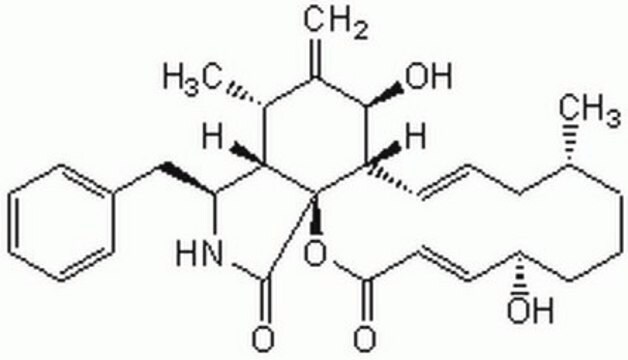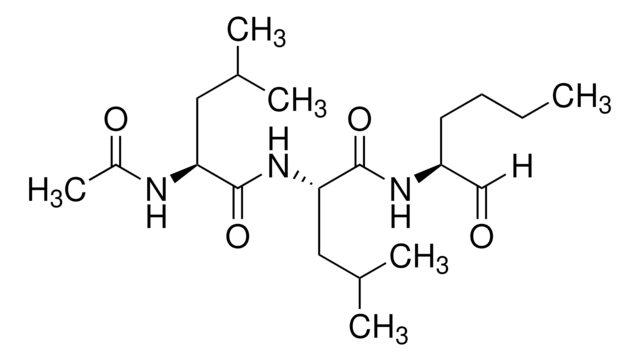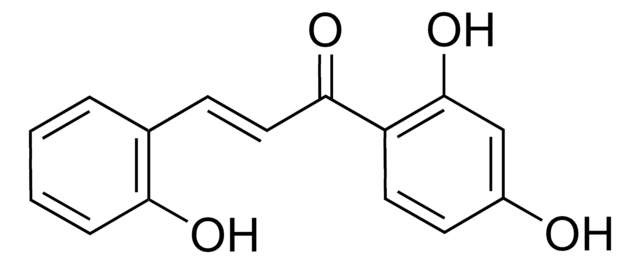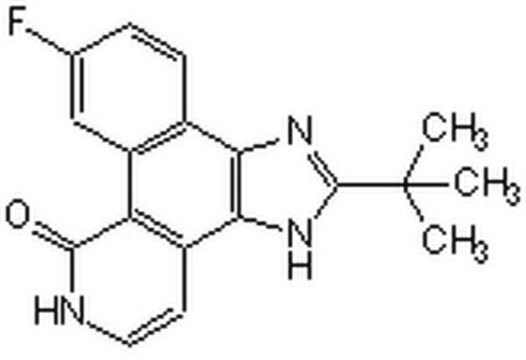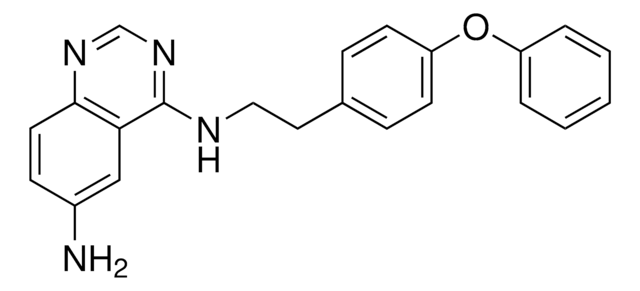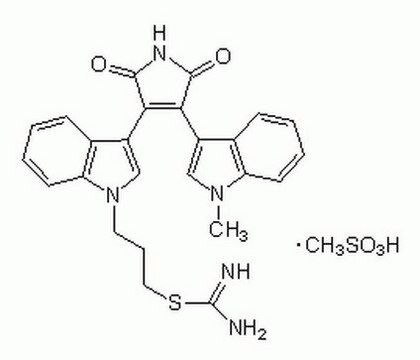420104
JAK3 Inhibitor II
The JAK3 Inhibitor II, also referenced under CAS 211555-04-3, controls the biological activity of JAK3. This small molecule/inhibitor is primarily used for Phosphorylation & Dephosphorylation applications.
Synonim(y):
JAK3 Inhibitor II, 4-[(3ʹ-Bromo-4ʹ-hydroxyphenyl)amino]-6,7-dimethoxyquinazoline, WHI-P154
About This Item
Polecane produkty
Poziom jakości
Próba
≥97% (HPLC)
Postać
solid
producent / nazwa handlowa
Calbiochem®
warunki przechowywania
OK to freeze
protect from light
kolor
pale yellow
rozpuszczalność
DMSO: 100 mg/mL
Warunki transportu
ambient
temp. przechowywania
−20°C
InChI
1S/C16H14BrN3O3/c1-22-14-6-10-12(7-15(14)23-2)18-8-19-16(10)20-9-3-4-13(21)11(17)5-9/h3-8,21H,1-2H3,(H,18,19,20)
Klucz InChI
CBIAKDAYHRWZCU-UHFFFAOYSA-N
Opis ogólny
Działania biochem./fizjol.
JAK-3
Opakowanie
Ostrzeżenie
Rekonstytucja
Inne uwagi
Sudbeck, E.A., et al. 1999. Clin. Cancer Res. 5, 1569.
Goodman, P.A., et al. 1998. J. Biol. Chem. 273, 17742.
Narla, R.K., et al. 1998. Clin Cancer Res.4, 2463.
Informacje prawne
Kod klasy składowania
11 - Combustible Solids
Klasa zagrożenia wodnego (WGK)
WGK 3
Certyfikaty analizy (CoA)
Poszukaj Certyfikaty analizy (CoA), wpisując numer partii/serii produktów. Numery serii i partii można znaleźć na etykiecie produktu po słowach „seria” lub „partia”.
Masz już ten produkt?
Dokumenty związane z niedawno zakupionymi produktami zostały zamieszczone w Bibliotece dokumentów.
Nasz zespół naukowców ma doświadczenie we wszystkich obszarach badań, w tym w naukach przyrodniczych, materiałoznawstwie, syntezie chemicznej, chromatografii, analityce i wielu innych dziedzinach.
Skontaktuj się z zespołem ds. pomocy technicznej